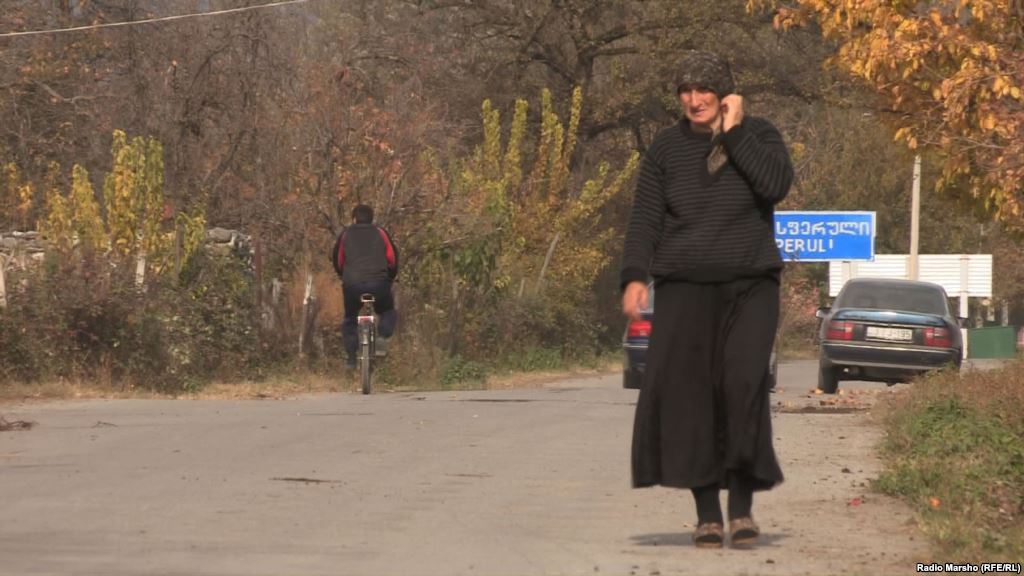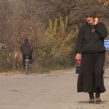
Georgia Arrests Pankisi Gorge Residents Who Allegedly Recruited for Islamic State
Publication: Eurasia Daily Monitor Volume: 12 Issue: 119
By:

Members of the so-called Islamic State (IS) have been quite active in the Pankisi Gorge, one of the most picturesque mountain gorges in Georgia, since the very start of the conflicts involving the IS in Syria and Iraq. Pankisi, situated in the northeastern part of Georgia and bordering Chechnya, is inhabited by ethnic Chechens. Sufi traditions were quite strong among the Muslims of the Pankisi Gorge prior to the start of the second Russian-Chechen war in 1999. However, after that war ended in 2000, a large influx of refugees fled Chechnya to Pankisi (Memo.ru, 2000). During certain periods, the number of refugees reached 10,000–12,000, exceeding the area’s population. The refugees also included insurgents, some of whom were members of Salafist-leaning jamaats. The Salafists turned out to be the most successful in spreading their views among the locals and in recruiting local youth.
As a result, the demographic and religious makeup of the Pankisi Gorge changed dramatically over a short period of time. With the exception of one ethnic-Georgian village, the rest of the area’s non-Chechen population, Avars and Ossetians, left, and nearly all of its remaining population was Muslim. Sufi traditions were broken, and the position of the Salafis among the Muslims of Pankisi was strengthened. For a long time, Georgia’s central government did not control Pankisi, and people from the gorge rose to prominence in the anti-Assad opposition in Syria. They have included Amir Umar Shishani (Tarkhan Batirashvili), one of the top leaders of the military wing of the Islamic State in the north; Amir Muslim (Muslim Margoshvili), who leads Junud al-Sham in Syria; and Amir Salahuddin (Faizulla Margoshvili), who heads Jaish al-Muhajireen wal-Ansar (Kavkazsky Uzel, June 19).
Pankisi was mentioned recently in connection with reports of young people traveling from the gorge to Syria and Iraq to join the Islamic State (Journal-neo.org, April 24). According to the Georgian Ministry of Interior, ten people from Pankisi have been killed in Syria (ria.ru, April 24). In reality, however, the figure of people from Pankisi killed in Syria may be twice as large. As more and more young people from the area traveled to Syria, the Georgian authorities were forced to amend the country’s law, so that persons who participate in—or recruit for participation in—illegal armed groups now face up to seven years imprisonment. The official estimate is that around 100 people from the Pankisi Gorge are fighting in the Middle East. However, it is hard to distinguish those who are fighting in Syria from those who are simply doing business in Turkey. This figure of 100 may be slightly underestimating the actual number of fighters from Pankisi in the Middle East.
With reports of Salafists actively trying to recruit young people from Pankisi, the Georgian authorities attempted to block the channels for recruitment into the ranks of the Islamic State. On June 14, the counterterrorist department of the Georgian interior ministry conducted a special operation in the gorge, arresting four individuals. Two of those arrested were released the following morning, while Ayub Borchashvili and Merab Tsatiashvili remain under arrest. Tsatiashvili is reportedly a relative of Amir Umar Shishani (Tarkahn Batirashvili) the Islamic State military leader (RIA Novosti, June 15; see Jamestownfoundation.blogspot.com, June 22).
While the arrested individuals may be Umar Shishani’s relatives, this is unimportant in a legal sense. Borchishvili, who is considered to be the principal preacher of Salafism in Pankisi, must have attracted the most attention from the authorities. He considers himself the “official” representative of the Islamic State in Georgia, and such self-advertisement has inevitably attracted the attention of the Georgian police. However, Borchishvili flatly denies being guilty of sending young people to Syria. He will most likely also be released because the Georgian security services are unlikely to have any evidence against him except his declaration of being the representative of the Islamic State in Pankisi.
As soon as the news about the special operation in the Pankisi Gorge spread, some members of the Salafist organization of Pankisi tried to leave Georgia. On June 15, four young people were removed from a flight in Tbilisi headed to Istanbul. The young people were suspected of intending to join the militants in Syria and Iraq (Rosbalt.ru, June 18). Three out of the four suspects are ethnic Georgians, which is a bad sign for Georgian society.
The attitude of Pankisi residents toward the special operation became clear when they refused to hold a public protest against the arrests. Residents of the gorge say they are unwilling to defend those who help their children go to war. Even if a public protest takes place, only the Salafis from the Salafist mosque in Duisi are likely to participate (Kavkazsky Uzel, June 19). This shows that there is little support for the Salafists among Pankisi residents. Yet, the majority of the gorge’s population is forced to tolerate the Salafists since they are part of the community. The Salafists in Pankisi are not refugees from Chechnya, but locals who converted to Salafism, under the influence of the refugees and Chechen militants who fought in the second Russian-Chechen war. The activities of the Salafists in Pankisi have brought visible changes to the area: hijabs and bearded men have become a common sight there.
Recent developments in the Pankisi Gorge indicate that internal contradictions and conflicts are starting to surface that may destabilize the situation in the area. If the people who are fighting in Syria and Iraq decide to return home, it could lead to another conflict in this part of Georgia, and the Georgian authorities do not seem prepared for such a turn of events.




